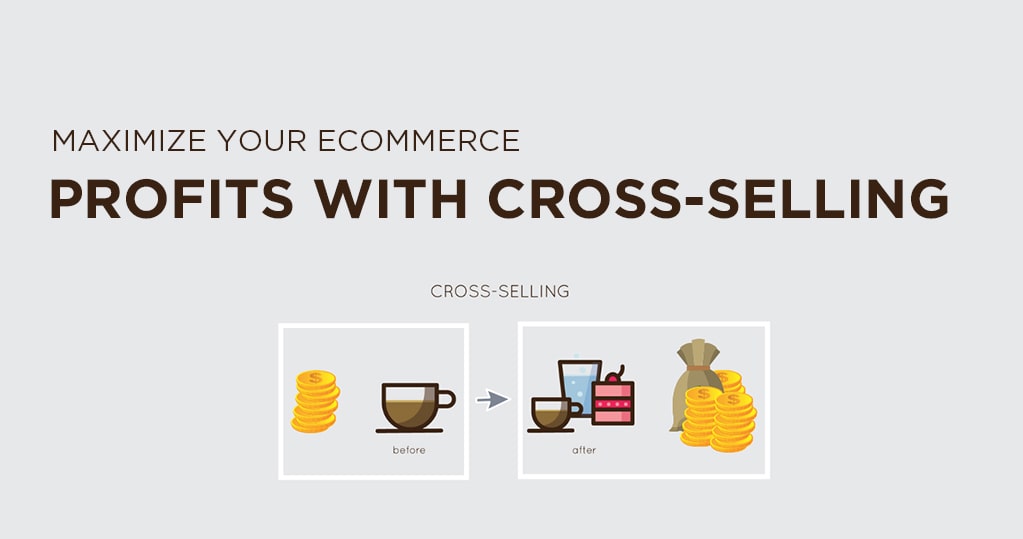Cross-selling is one of the most robust ecommerce tactics that most sites miss out on.
Think about it….
What if a simple strategy or plugin can increase your online store’s profits by 10%, 30%, or even 100%? Wouldn’t that be huge?
Some of the world’s biggest companies, including Amazon and Walmart leverage this strategy to boost their ecommerce sales with cross-selling.
A few tiny changes can boost order size and make a big difference.
In this article, we’ll look at how cross-selling works, why you need it, and how to get started.
How does cross-selling work?
Cross-selling is a strategy to sell related products to the customer that’s already interested in a certain product from your store.
An example that you can think of in the fashion industry is something like a pair of jeans that can go along with a sweater that the customer is already interested in.
This can be mixed with bundling which we can speak more of later in this article.
Cross-selling comes in a few different formats:
- The most common method would be “related products” While those two products don’t necessarily go together, they both appeal to the buyer and can go hand to hand.
- Another is for “complementary products” — an item that goes directly with the primary product. These might be batteries for a TV controller or ink for a printer.
- The next most favorite cross-selling method is a cross-sell method for software and services.
Should you be cross-selling in your store?
Now that you know the basics of cross-selling, is it worth the effort?
Absolutely! Major retailers depend on cross-selling for a reason because It works. Amazon reports that cross-selling and up-selling generate as much as 35% of profits. If you’re not doing it in your ecommerce store, you’re leaving money on the table.
Cross-selling offers a few advantages:
- It increases your average order size. People who purchase one product are more likely to add another. If you can spend more on marketing to new customers, each new customer will be worth more to you.
- It increases profits. Large chain stores typically have higher margins on accessories than on the main product itself — you can follow a similar strategy with your e-commerce store. If you offer free or flat-rate shipping, you’ll also save money on smaller accessories that don’t cost extra to ship but bring in more revenue.
- It increases your customer lifetime value. Every time a customer buys from you, he or she is likely to spend more. Higher-order values compound over the life of the customer, and you earn more as long as the customer buys from you.
Best strategies for implementing a cross-selling strategy
There are a lot of ways you can implement cross-selling in your store, but there is only two common and effective approach.
On the product page and during checkout.
While there are no hard and fast rules, a general guideline is that it’s easier to pitch “low barrier” products at checkout and leave high-ticket items on the product page. Put larger accessories that cost 25-50% of the primary product on the product page, and leave smaller items at 15% or below for checkout.
To make the most of these strategies, here are some suggestions on how to upsell:
- Market your most sold or most reviewed products
- Implement a plugin at checkout that can auto-populate related products
- Make add-on features like recommended products and other related products obvious
- Using previous customer data as a recommendation engine
- Make suggestions relevant by giving context: why should the customer buy this too.
- Go for products that are easily forgotten: filters for lenses, earphones for mobile phones, most importantly get creative and be data-driven.
What types of products to use for cross-selling
A few guidelines when promoting products through cross-selling.
Keep things relevant. The more closely related the add-on product is to what the customer is looking to buy, the more likely they are to add to their cart and purchase.
Understand the needs of your customers, offer relevant products, and the selling will come more easily.
A customer looking at a $900 chef’s knife is unlikely to be interested in budget kitchen products, no matter how tempting the price. But show a premium set of kitchen shears, and you’ll most likely capture a sale.
Customization goes for pricing too: Don’t cross-sell products that cost 60% more than the product in your customer’s cart.
Start cross-selling today to boost profits
If you’ve not yet used cross-selling in your store, why not give it a try?
Start by finding your best-selling, big-ticket items — your flagship products or more expensive items — then look for related products that would directly interest those customers, and present them on the product page or during checkout.
Test and improve on a rolling basis, and see which products sell well. Build trust with your customer, don’t pitch too hard, and you’ll begin to see profits in places you didn’t expect.
What product will you cross-sell first? Let us know!








